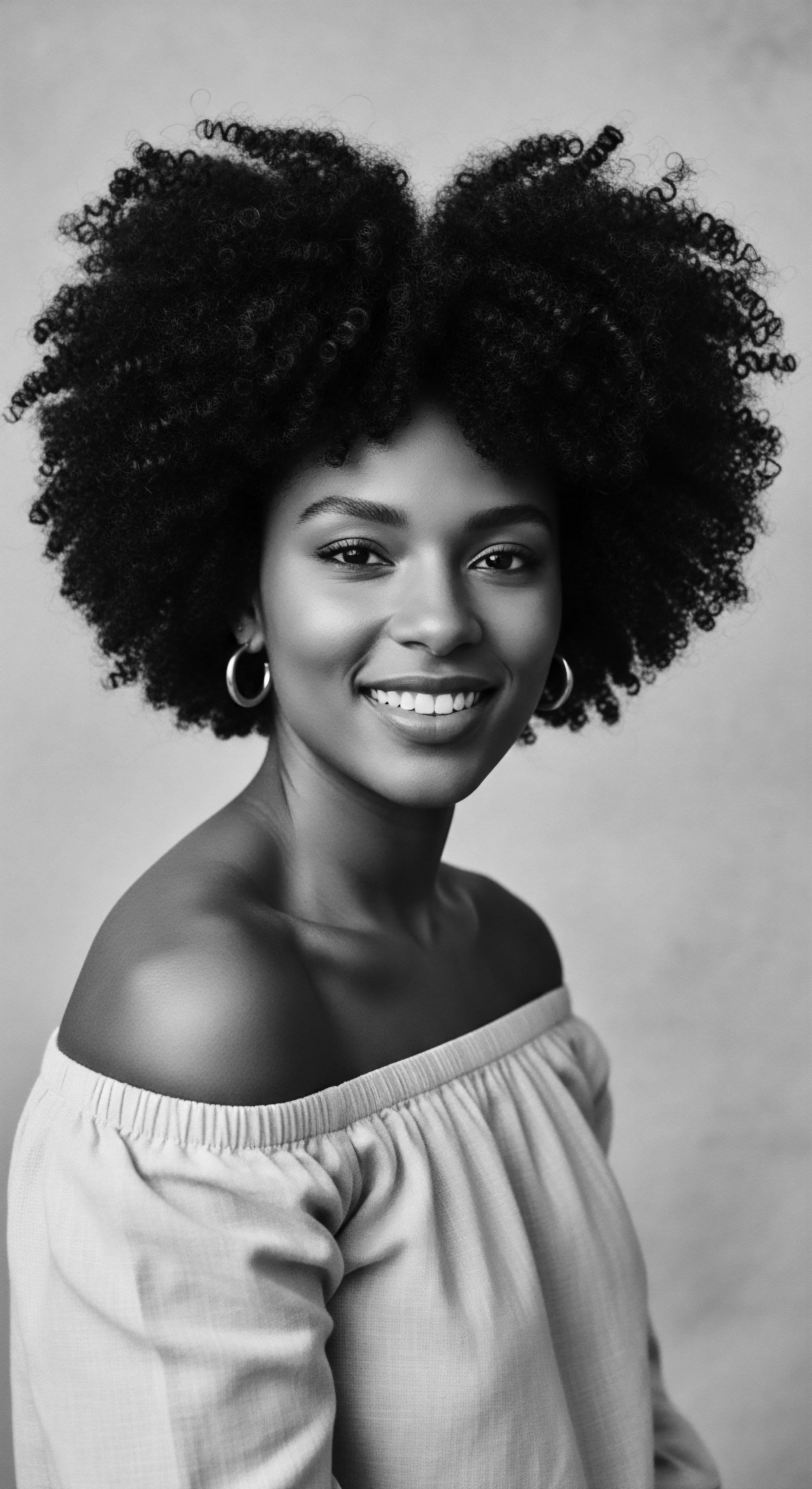
Fundamentals
The notion of Ancient Hair Science, within the expansive archives of Roothea’s ‘living library,’ represents far more than a mere collection of historical grooming methods. It delineates a profound, interconnected understanding of hair’s elemental biology, its intricate relationship with the natural world, and its deep significance within human cultures, particularly those with rich textured hair heritages. This designation, far from a static definition, describes a dynamic body of knowledge passed across generations, evolving through observation, communal practice, and an inherent reverence for the strand itself. It is a testament to the ingenious ways ancestral communities comprehended and cared for hair, seeing it as a living extension of self and spirit.
For centuries, before the advent of industrial chemistry or standardized beauty paradigms, communities across the globe developed sophisticated systems for hair maintenance. These systems were not haphazard; they stemmed from meticulous observation of plant properties, animal products, and mineral compositions, alongside a keen awareness of environmental conditions. The foundational meaning of Ancient Hair Science lies in this synthesis of empirical knowledge and spiritual connection. It explains how our forebears identified the unique needs of varied hair textures, from the resilient coils of the Sahara to the protective braids of the rainforest, devising solutions that respected the hair’s inherent structure and vitality.
The primary explication of Ancient Hair Science for a newcomer involves recognizing hair not just as a protein filament, but as a responsive, living entity. Its biological architecture, though seemingly simple, reveals complex patterns of curl, porosity, and strength that ancient practitioners intuitively grasped. They understood, for instance, that coiled strands possessed a distinct susceptibility to dryness due to the natural path of sebum along the hair shaft.
This awareness guided their choice of emollient plant oils and butters, often rich in fatty acids, to provide lasting moisture and protection. The wisdom held within Ancient Hair Science, therefore, offers a foundational understanding of hair’s physical attributes, always viewed through the lens of traditional care and the environment that shaped these practices.
Ancient Hair Science is the ancestral wisdom of hair care, deeply rooted in the biological understanding of hair and its cultural significance.

Echoes from the Source ❉ Elemental Biology and Early Practices
The earliest manifestations of Ancient Hair Science emerged from a direct engagement with the earth’s bounty. Ancestral peoples observed the resilience of certain botanicals, the protective qualities of natural clays, and the restorative properties of animal fats. They recognized that hair, much like the plants and animals around them, possessed an inherent life cycle, a growth phase, a resting phase, and a shedding phase.
Their care rituals often mirrored these natural rhythms, employing ingredients and techniques that supported the hair’s natural progression rather than imposing artificial alterations. This deep connection to the rhythms of nature provided the bedrock for their hair science.
Consider the elemental understanding of moisture and protection. In arid climates, the sun’s intensity and dry air posed constant challenges to hair integrity. Communities responded by utilizing ingredients that sealed in hydration and shielded strands from environmental stressors.
In humid regions, the focus shifted to managing excess moisture, preventing fungal growth, and maintaining structural integrity. These regional variations in practice speak to a nuanced, empirical understanding of hair’s interaction with its surroundings, a fundamental aspect of Ancient Hair Science.
- Botanical Remedies ❉ Early applications often involved crushing leaves, seeds, or roots to extract nutrient-dense liquids or pastes for scalp and strand conditioning.
- Mineral Applications ❉ Clays and mineral-rich earths served as cleansing agents, detoxifiers, and protective coatings for the hair.
- Animal-Derived Ingredients ❉ Fats, oils, and even specific animal proteins were used for their emollient, strengthening, and protective attributes.
- Physical Manipulation ❉ Braiding, twisting, and wrapping techniques were not merely aesthetic; they provided physical protection, minimized tangling, and retained moisture, a practical application of Ancient Hair Science.
The collective knowledge gathered over millennia forms the essence of Ancient Hair Science. It is a living archive, preserved not only in texts or artifacts, but in the hands, rituals, and communal memories of those who continue to honor these time-tested traditions. The meaning extends beyond simple product application; it encompasses the social bonds forged during communal grooming, the spiritual reverence for hair as a conduit to ancestry, and the practical wisdom of living in harmony with the environment.
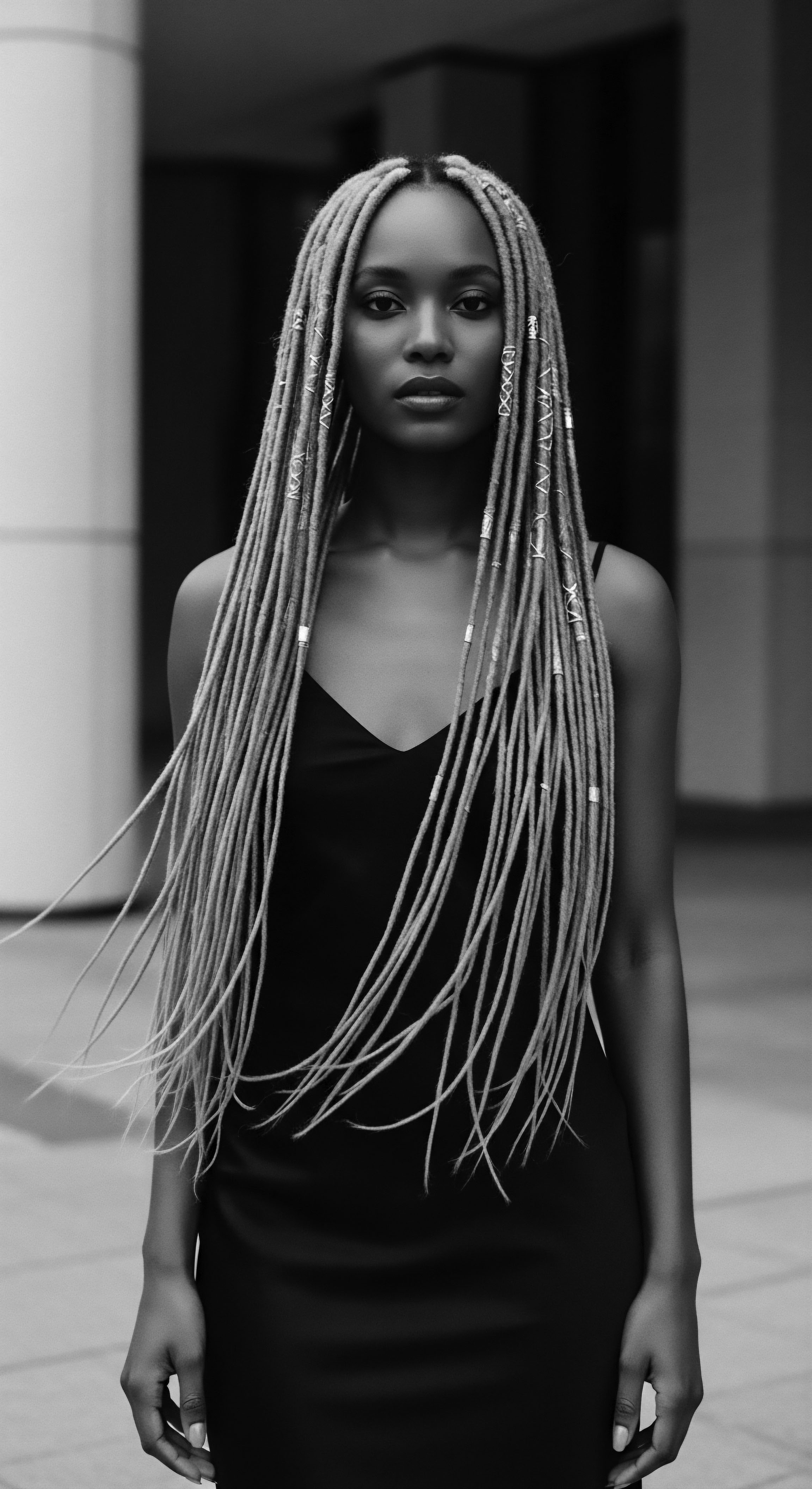
Intermediate
Moving beyond the foundational tenets, an intermediate comprehension of Ancient Hair Science unveils its sophisticated interplay with communal life and the evolution of cultural identity. The delineation of this concept at an intermediate level recognizes that hair care practices were rarely solitary acts. They were often communal rituals, strengthening familial ties and social structures. The meaning of Ancient Hair Science here expands to include the shared wisdom, the oral traditions, and the intergenerational transmission of knowledge that sustained these practices through time.
This level of understanding delves into the specific techniques and their underlying rationale, connecting ancestral methods to their practical benefits for textured hair. It acknowledges the nuanced ways different societies, particularly those within the African diaspora, adapted and preserved these traditions even in the face of immense adversity. The clarification of Ancient Hair Science at this stage involves exploring how the inherited biological characteristics of textured hair — its unique curl patterns, varying densities, and distinct porosity — were understood and addressed by ancient practitioners. They recognized that these hair types, while magnificent, required specific approaches to prevent dryness, breakage, and tangling.
Ancient Hair Science is a testament to the enduring communal wisdom and adaptive genius of ancestral hair care traditions, especially for textured hair.
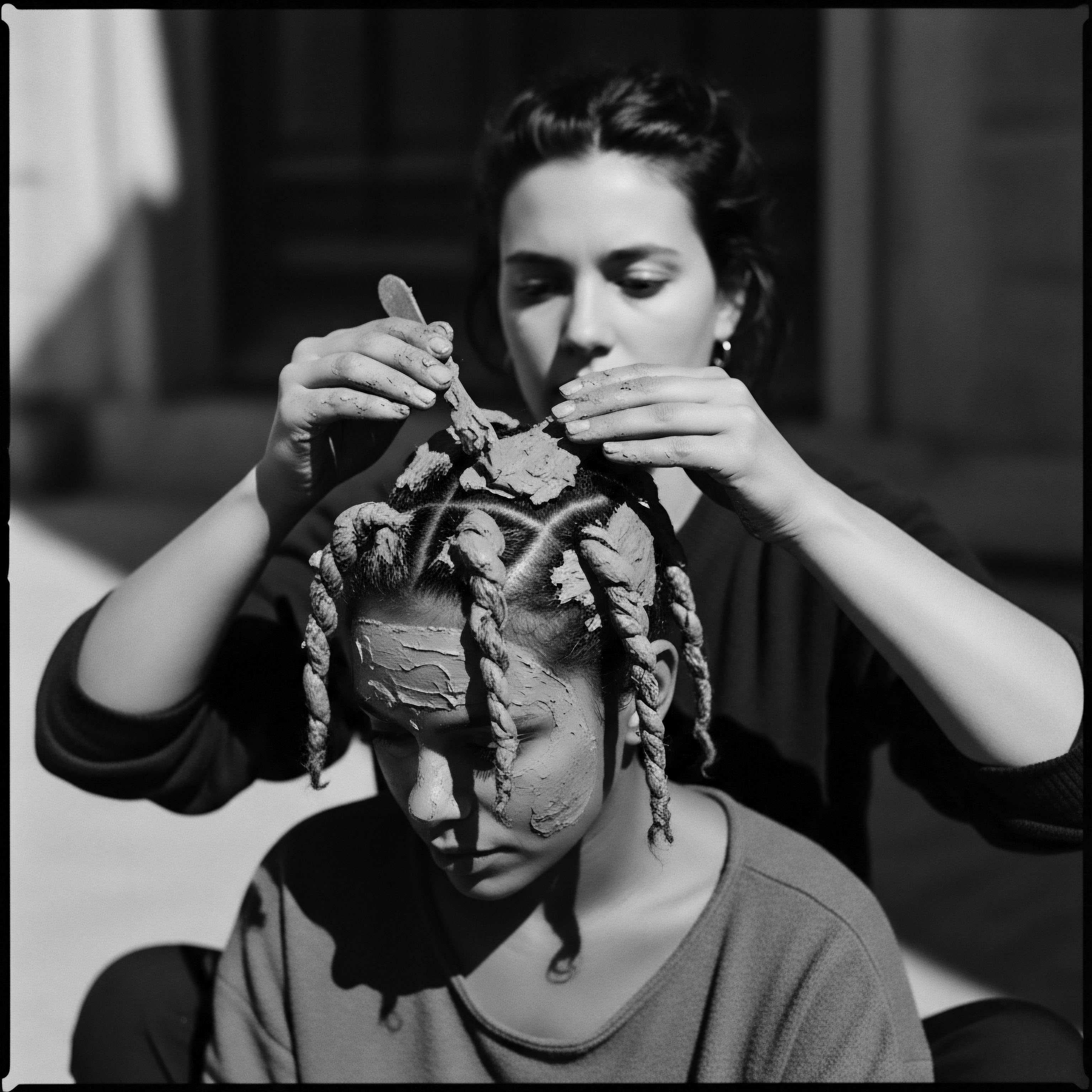
The Tender Thread ❉ Living Traditions of Care and Community
The heart of Ancient Hair Science, particularly for textured hair, beats within the tender thread of communal care. In numerous African societies, hair grooming was a profound social activity. It provided a setting for storytelling, for teaching younger generations about their heritage, and for reinforcing bonds within the community.
The act of braiding, twisting, or oiling another’s hair was an intimate exchange, a transfer of knowledge and affection. This communal aspect is a vital component of the meaning of Ancient Hair Science, underscoring its social and spiritual dimensions.
Consider the Basara women of Chad, whose traditional use of Chebe Powder exemplifies a living, ancient hair science. For generations, these women have applied a mixture containing roasted and ground Croton zambesicus seeds, mahllaba soubiane, missic stone, cloves, and samour resin to their hair. This practice, deeply embedded in their cultural fabric, is credited with their ability to maintain exceptionally long, robust, and healthy hair, often reaching waist length (SEVICH, n.d.). The application is not merely a cosmetic routine; it is a ritual passed down, often performed communally, where the paste is applied to damp, sectioned hair, which is then braided and left for days (SEVICH, n.d.).
This consistent application strengthens the hair shaft, reduces split ends, and improves elasticity, directly addressing the unique needs of highly textured hair to retain length and prevent breakage. The longevity of this practice speaks to the empirical efficacy of Ancient Hair Science.
The knowledge embedded in such traditions goes beyond superficial application. It encompasses a deep understanding of ingredients’ properties, their synergy, and their application methods. The Basara women intuitively recognized the moisture-retaining and strengthening qualities of Chebe’s components, employing them in a way that minimizes damage and maximizes length retention. This practice stands as a powerful example of how ancient wisdom, through repeated observation and generational refinement, developed sophisticated solutions for hair health, particularly for coil patterns often prone to dryness and fragility.
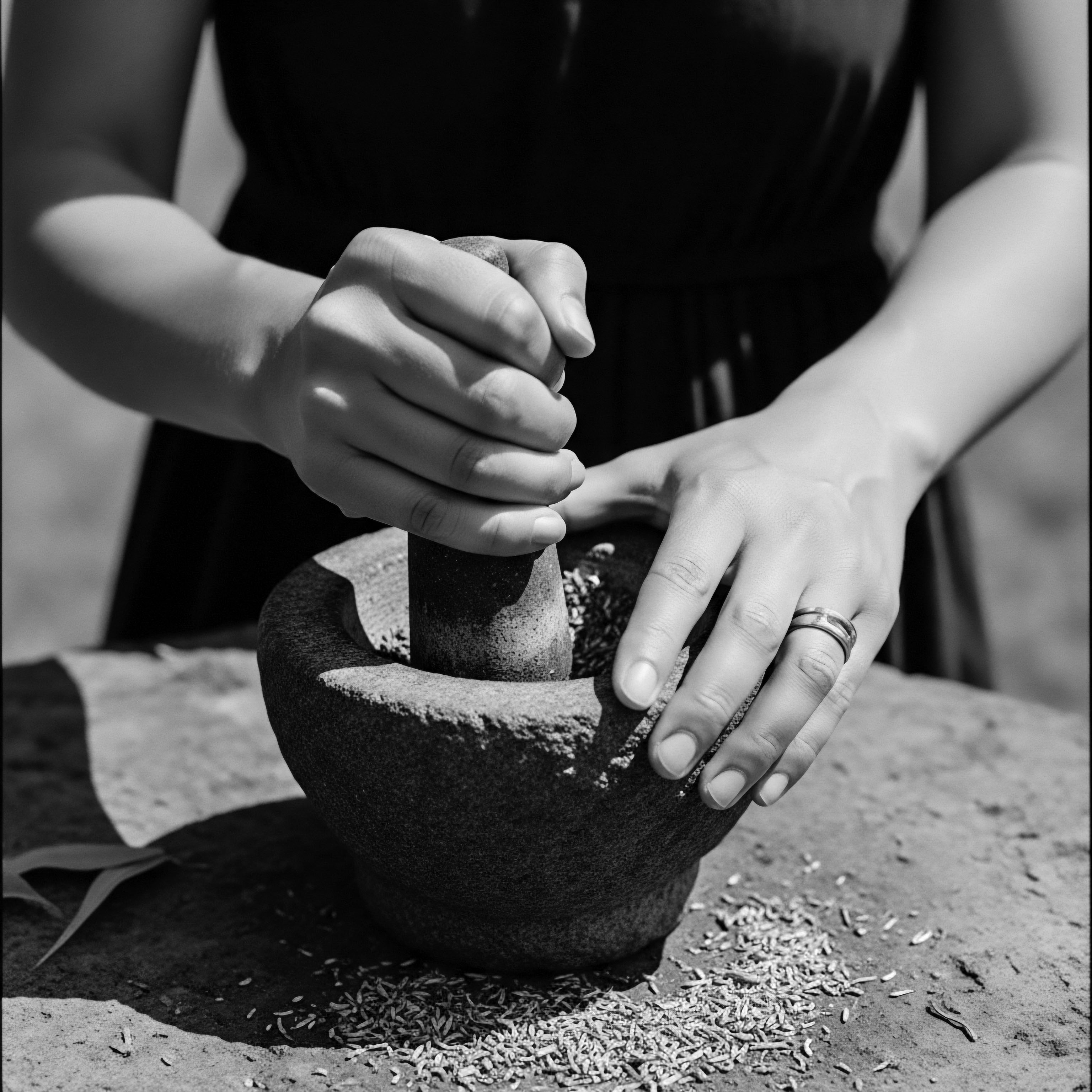
Ancestral Techniques and Their Scientific Resonance
Many ancient hair care techniques, once viewed as purely traditional, now find compelling resonance with modern scientific understanding. The meticulous process of hair oiling, prevalent across numerous cultures, including many African communities, served to seal the cuticle, reduce hygral fatigue, and impart a protective barrier against environmental aggressors. Similarly, protective styling, such as intricate braids, twists, and locs, minimized manipulation, shielded hair from friction, and retained moisture. These practices were not random; they were deliberate applications of an inherited understanding of hair’s structural integrity and its environmental vulnerabilities.
The careful selection of specific plants for their medicinal and cosmetic properties also forms a crucial aspect of Ancient Hair Science. For instance, the use of aloe vera for scalp soothing or hibiscus for conditioning, though rooted in tradition, finds modern validation in their documented anti-inflammatory, moisturizing, and antioxidant compounds. This intergenerational knowledge, honed over centuries, represents a sophisticated system of ethnobotanical pharmacology applied to hair.
- Hair Oiling and Sealing ❉ Ancestral communities understood the need to lubricate and protect hair, especially textured strands. Oils like shea butter, coconut oil, and castor oil, derived from local botanicals, were regularly applied to seal in moisture and reduce friction, preventing breakage. This practice forms a fundamental aspect of the delineation of Ancient Hair Science.
- Protective Styling ❉ Braiding, twisting, and cornrowing were not merely aesthetic expressions. These styles minimized daily manipulation, protected fragile ends, and allowed for extended periods of moisture retention, contributing significantly to length preservation in textured hair. The interpretation of these styles extends to their role in hair health.
- Herbal Rinses and Treatments ❉ Infusions from plants like rosemary, nettle, or hibiscus were used as rinses to cleanse the scalp, strengthen hair, or add shine. These applications often provided antimicrobial or anti-inflammatory benefits, supporting overall scalp health, a key component of the explication of Ancient Hair Science.
The significance of Ancient Hair Science at this intermediate level lies in its demonstration of how cultural practices are deeply intertwined with practical, effective solutions for hair health. It showcases the adaptive genius of communities who, without laboratories or complex chemical analyses, developed highly effective regimens that honored the unique biology of textured hair and sustained its vitality through generations.
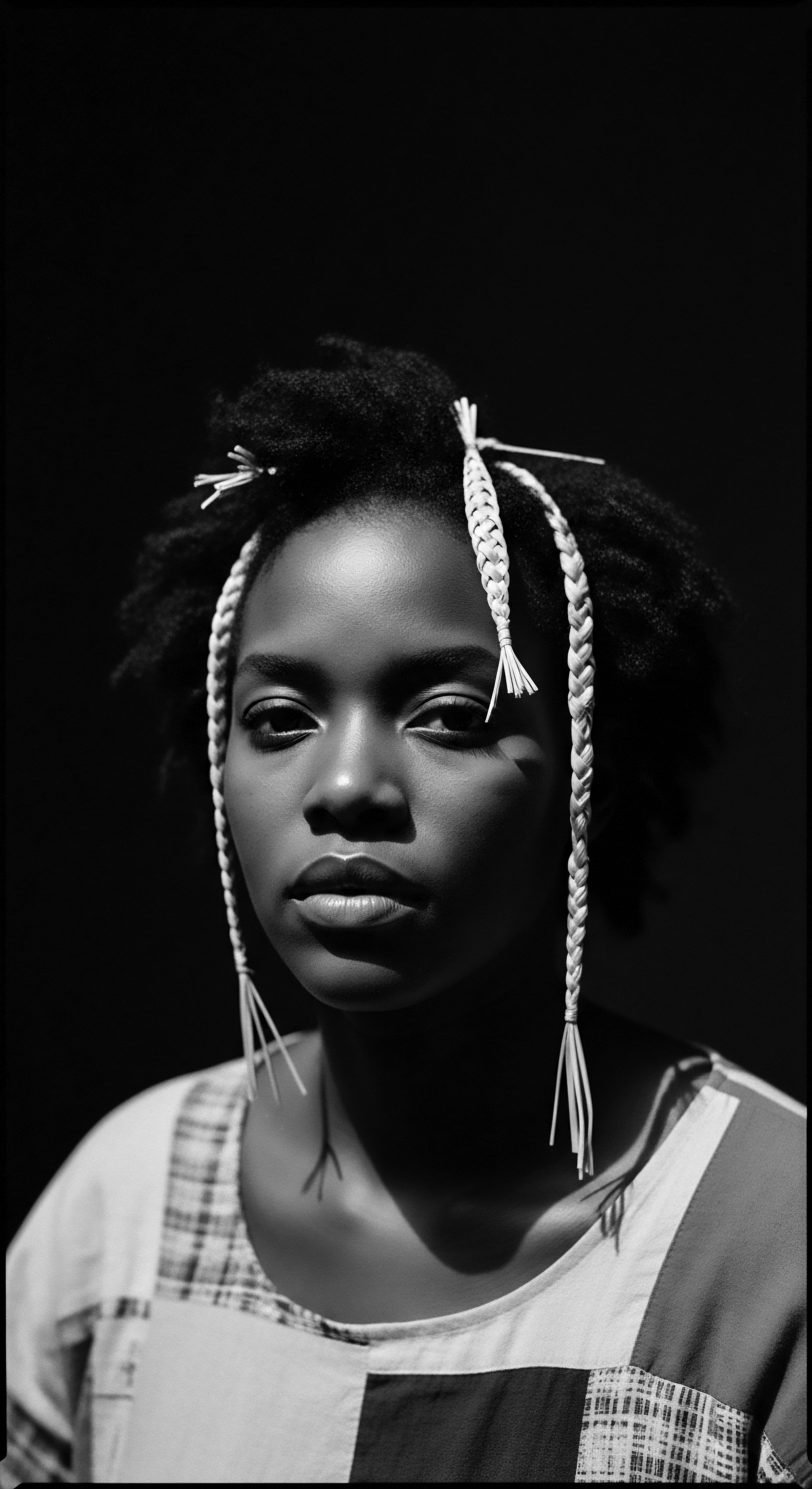
Academic
The academic definition of Ancient Hair Science transcends a simple historical accounting, positing it as a complex, empirical system of knowledge generation and application, particularly within the context of textured hair heritage. This scholarly interpretation recognizes Ancient Hair Science as a sophisticated, culturally embedded epistemology concerning trichology, ethnobotany, and cosmetic chemistry, developed through iterative observation, communal consensus, and intergenerational transmission. Its meaning is not merely descriptive; it is an analytical framework for understanding the profound relationship between human societies, their environment, and the biological realities of their hair, with a specific focus on the unique morphological and physiological characteristics of Black and mixed-race hair.
This delineation acknowledges that ancestral hair practices were not static folklore but dynamic, adaptive sciences. They involved systematic identification of plant properties, meticulous preparation techniques, and an understanding of hair’s response to various environmental stressors and treatments. The explication of Ancient Hair Science at this level requires examining its underlying principles, often revealing convergences with contemporary scientific understanding, even when the nomenclature or methodologies differed. It necessitates a critical analysis of how these knowledge systems were preserved, adapted, and sometimes suppressed or devalued, particularly during periods of colonialism and cultural imposition, yet persisted as powerful expressions of identity and resilience.
Ancient Hair Science represents a sophisticated, empirically derived body of knowledge concerning textured hair, its biology, and its holistic care, profoundly shaped by cultural heritage and environmental adaptation.
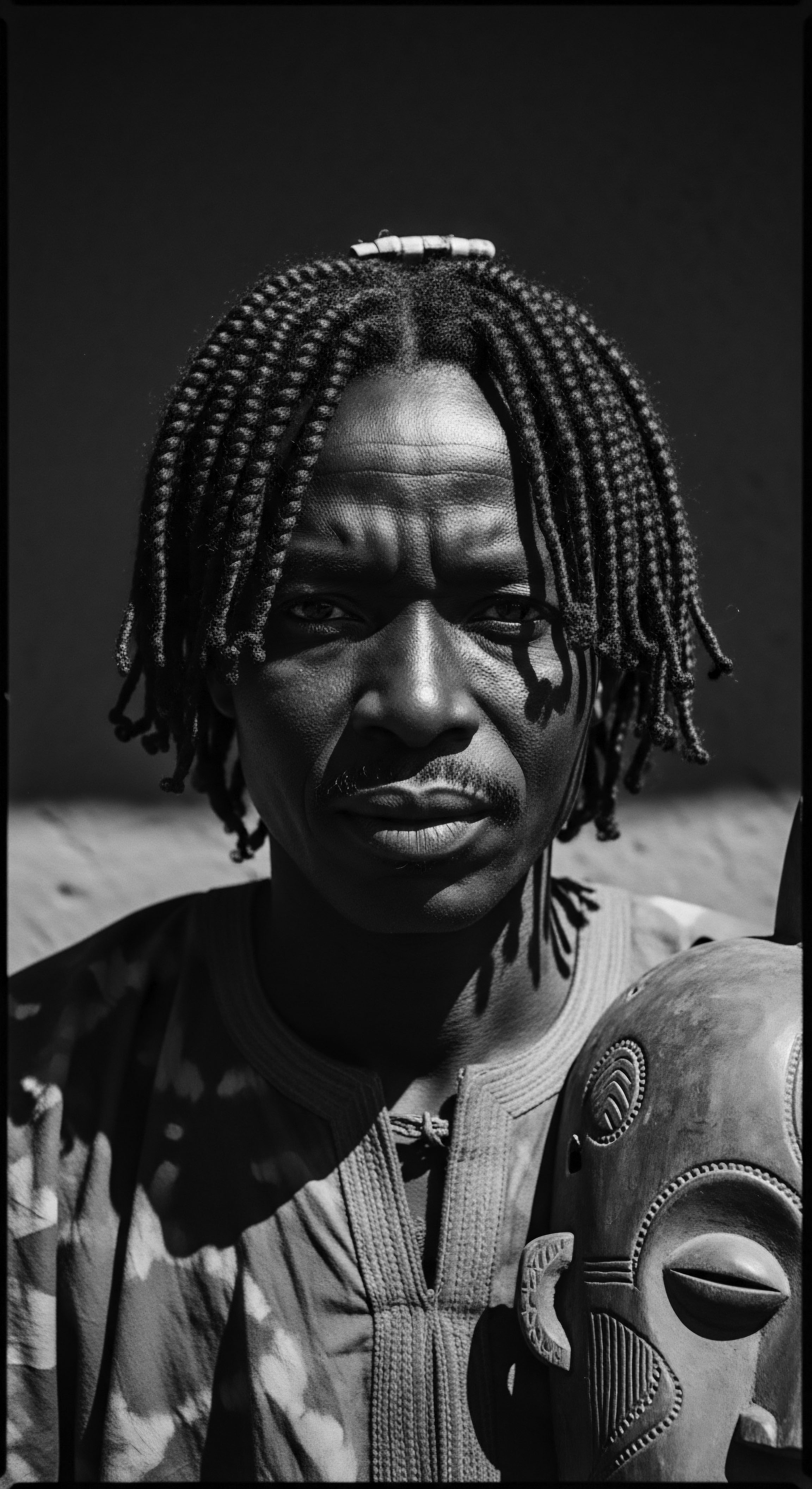
The Unbound Helix ❉ Voicing Identity and Shaping Futures
The academic discourse surrounding Ancient Hair Science deepens our comprehension of hair as a potent symbol of identity, agency, and resistance, especially for communities with textured hair. In pre-colonial African societies, hairstyles served as intricate visual languages, conveying a wealth of information about an individual’s social status, age, marital standing, tribal affiliation, and even spiritual beliefs (Gale Review, 2021). The elaborate cornrows, braids, and locs were not merely aesthetic choices; they were deliberate acts of communication and cultural affirmation (Afriklens, 2024). This profound connection between hair and identity underscores the deep substance of Ancient Hair Science.
During the transatlantic slave trade and subsequent periods of colonial rule, the deliberate forced shaving of African hair served as a brutal act of dehumanization, a systematic attempt to strip individuals of their cultural markers and sever their ties to ancestral practices (Monmouth University, 2025). Yet, despite these egregious efforts, the resilience of Ancient Hair Science persisted. Enslaved Africans and their descendants covertly maintained traditional hair practices, transforming hairstyles into powerful symbols of resistance and silent assertions of identity in the face of immense oppression (Thrifts & Tangles, 2021). The ingenious practice of braiding hair patterns to conceal rice seeds, which could later be planted for sustenance, stands as a testament to the life-sustaining wisdom embedded within these traditions (University of Salford, 2024).
This specific historical example powerfully illuminates the direct, life-preserving connection of Ancient Hair Science to textured hair heritage and Black experiences. The meaning of hair extended beyond aesthetics; it became a vehicle for survival and the preservation of cultural memory.
The continuing relevance of Ancient Hair Science for textured hair communities lies in its capacity to inform contemporary approaches to hair care and self-perception. Modern trichology, while advancing in its scientific understanding, increasingly recognizes the wisdom embedded in traditional practices. For instance, the traditional use of protective styles, long practiced in African cultures, aligns with current scientific understanding of minimizing mechanical stress on fragile hair strands, thereby reducing breakage and promoting length retention. The delineation of Ancient Hair Science thus involves a continuous dialogue between historical knowledge and contemporary validation.
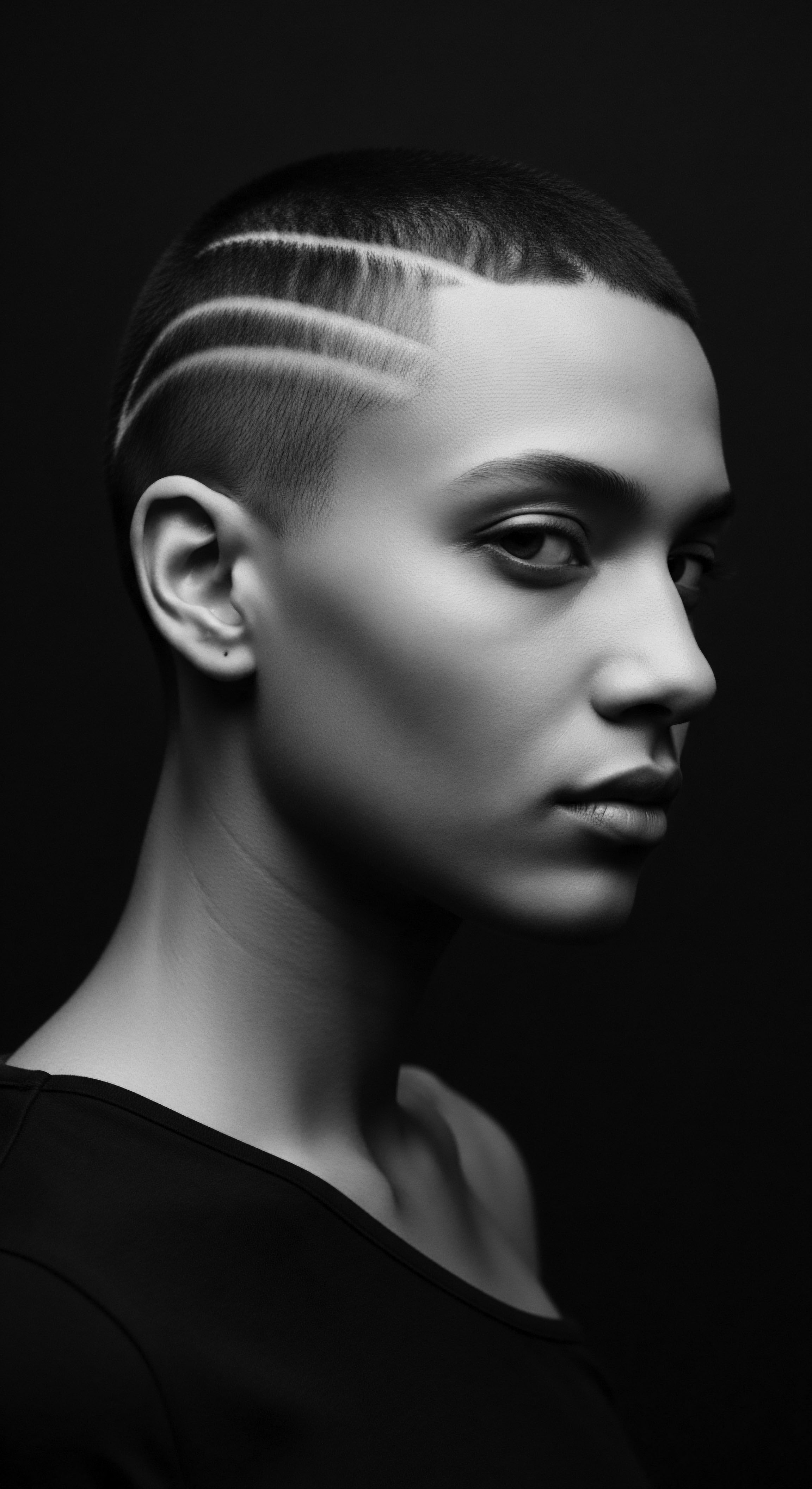
Interconnected Incidences and Long-Term Consequences
The interconnectedness of Ancient Hair Science with broader societal structures is a critical area of academic examination. The historical devaluation of textured hair, often stemming from colonial beauty standards, has had long-term psychosocial consequences for individuals of African descent (Noma Sana, 2024). This historical narrative highlights how the suppression of ancestral hair practices contributed to internalized biases and a disconnection from heritage.
However, the resurgence of natural hair movements in recent decades represents a powerful reclamation of Ancient Hair Science, a conscious return to practices that honor and celebrate the inherent beauty and strength of textured hair. This movement signifies a reassertion of identity and a rejection of Eurocentric beauty norms, demonstrating the lasting impact of ancestral wisdom.
From an academic perspective, the study of Ancient Hair Science also involves analyzing the ethnobotanical knowledge that underpinned these practices. Research into African plants used for hair care, though historically less documented than medicinal uses, is gaining recognition. Studies, such as those exploring the “cosmetopoeia” of African plants, identify species traditionally used for hair treatment, revealing a sophisticated indigenous pharmacology (ResearchGate, 2024). These plants, often applied topically, provide benefits ranging from anti-inflammatory properties for scalp health to moisture retention for strand integrity, aligning with the observed efficacy of ancient regimens.
The academic analysis of Ancient Hair Science also extends to its role in public health and wellness. Dermatologists increasingly recognize the need to understand diverse hair care practices, particularly for Black patients, to adequately counsel them and prevent common hair disorders disproportionately affecting this population, such as traction alopecia (Monmouth University, 2025). This calls for a greater integration of culturally informed perspectives, drawing from the rich knowledge base of Ancient Hair Science, into modern medical education and practice. The long-term success insights derived from this interdisciplinary approach underscore the enduring value of ancestral wisdom.
| Aspect of Ancient Hair Science Moisture Retention |
| Traditional Practice (Heritage Context) Regular application of plant butters (e.g. shea, cocoa) and oils (e.g. coconut, castor) to coiled strands. |
| Modern Scientific Parallel/Validation Lipid-rich emollients reduce transepidermal water loss, forming a protective barrier and minimizing cuticle lift, crucial for high-porosity hair. |
| Aspect of Ancient Hair Science Protective Styling |
| Traditional Practice (Heritage Context) Intricate braiding, twisting, and cornrowing patterns to minimize daily manipulation and exposure. |
| Modern Scientific Parallel/Validation Reduces mechanical stress, friction, and environmental damage, preserving hair length and reducing breakage, particularly for fragile textures. |
| Aspect of Ancient Hair Science Scalp Health |
| Traditional Practice (Heritage Context) Use of herbal rinses (e.g. rosemary, nettle) and clays for cleansing and soothing the scalp. |
| Modern Scientific Parallel/Validation Botanical extracts possess antimicrobial, anti-inflammatory, and antioxidant properties that support a healthy scalp microbiome and reduce irritation. |
| Aspect of Ancient Hair Science Hair Strengthening |
| Traditional Practice (Heritage Context) Application of specific plant-based powders (e.g. Chebe powder by Basara women) to coat and fortify hair fibers. |
| Modern Scientific Parallel/Validation Polysaccharides and proteins in plant compounds can form a protective layer, enhancing elasticity and tensile strength, preventing premature breakage (SEVICH, n.d.). |
| Aspect of Ancient Hair Science The enduring practices of Ancient Hair Science offer a profound legacy of effective hair care, often finding contemporary scientific affirmation. |
The comprehensive exploration of Ancient Hair Science from an academic lens reveals its profound influence on human well-being, cultural continuity, and even resistance against systemic oppression. It argues for the recognition of these traditional knowledge systems as valid and valuable sciences, deserving of rigorous study and respectful integration into contemporary understandings of hair, health, and identity. The significance of this concept lies in its ability to bridge historical wisdom with future innovations, ensuring that the heritage of textured hair care remains vibrant and respected.
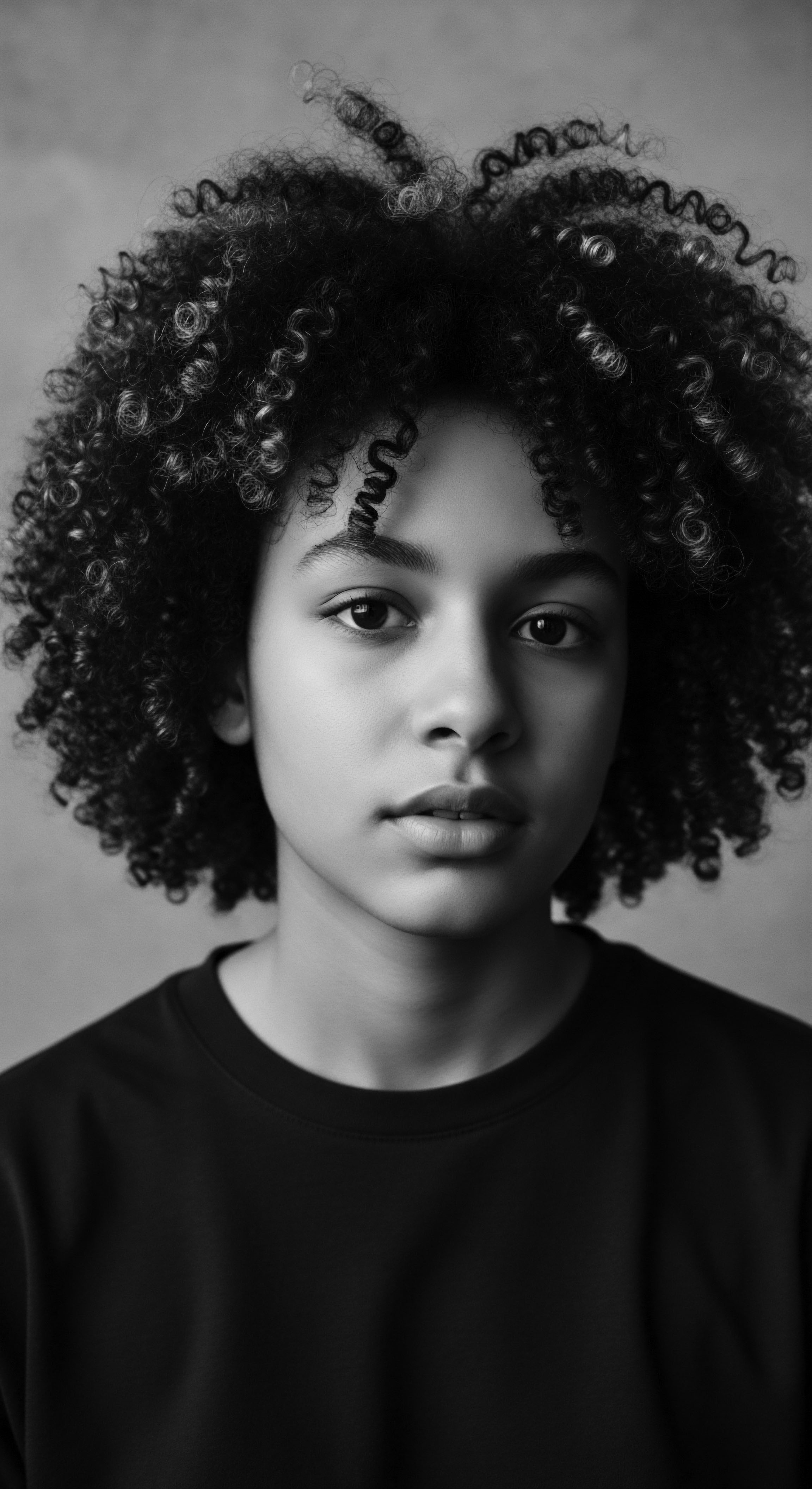
Reflection on the Heritage of Ancient Hair Science
The journey through Ancient Hair Science, as cataloged within Roothea’s ‘living library,’ culminates in a profound meditation on the enduring spirit of textured hair and its indelible heritage. This exploration reveals that hair is not merely a biological appendage; it is a vibrant conduit to ancestral wisdom, a living testament to resilience, and a canvas for identity. The ‘Soul of a Strand’ ethos, which guides Roothea’s mission, finds its deepest resonance in the recognition that every coil, every curl, every twist carries the echoes of generations past, their ingenuity, their struggles, and their triumphs.
We observe how the elemental understandings of ancient peoples, their intimate connection with the earth’s botanicals and minerals, laid the groundwork for sophisticated hair care regimens. These practices, honed over centuries, represent a profound respect for the hair’s inherent nature, particularly the unique needs of textured hair. The communal rituals of grooming, where knowledge was shared and bonds were strengthened, speak to a holistic approach to wellness that transcended individual appearance, touching upon the very fabric of community.
The legacy of Ancient Hair Science is especially poignant when considering the historical attempts to erase or devalue textured hair. Yet, against all odds, these traditions persisted, adapted, and re-emerged as powerful symbols of self-acceptance and cultural pride. The reclamation of natural hair in modern times is not simply a trend; it is a profound act of remembrance, a conscious re-connection to a rich, unbroken lineage of care and identity. It is a declaration that the wisdom of the ancestors continues to guide and inspire.
This living library, therefore, serves as more than an informational resource. It is a sacred space where the whispers of ancient hands still shape our understanding, where the resilience of a strand becomes a metaphor for the strength of a people. The continuous evolution of Ancient Hair Science, from the elemental source to the unbound helix of future possibilities, reminds us that true beauty is deeply rooted in authenticity, in heritage, and in the unwavering spirit of every individual strand. It is a legacy that invites us to honor our past, celebrate our present, and envision a future where every textured crown is revered.
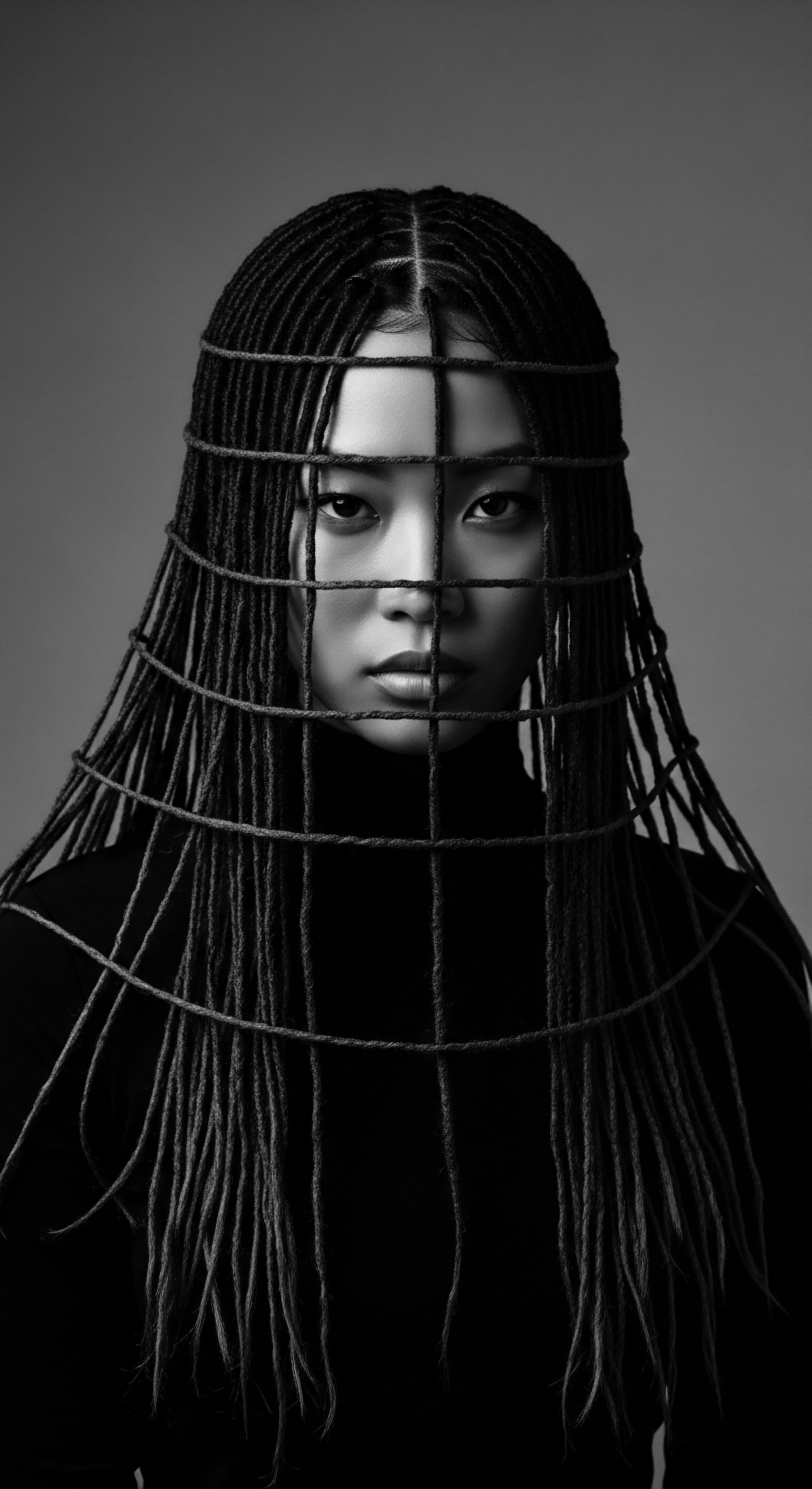
References
- Afriklens. (2024, November 1). African Hairstyles ❉ Cultural Significance and Legacy. Afriklens.
- Byrd, A. & Tharps, L. (2001). Hair Story ❉ Untangling the Roots of Black Hair in America. St. Martin’s Press.
- Gale Review. (2021, November 23). African Hairstyles – The “Dreaded” Colonial Legacy. The Gale Review.
- Monmouth University. (2025, February 27). The History of Black Hair. Black History Month – LibGuides at Monmouth University.
- Noma Sana. (2024, October 30). The History of Straightening Afro and Textured Hair. Noma Sana.
- ResearchGate. (2024, February 2). Cosmetopoeia of African Plants in Hair Treatment and Care ❉ Topical Nutrition and the Antidiabetic Connection? ResearchGate.
- SEVICH. (n.d.). Natural Hair Care ❉ Understanding Chebe Powder and Chebe Oil. SEVICH.
- Thrifts & Tangles. (2021, December 16). The Evolution of Black Hair for Beauty & Resistance. Thrifts & Tangles.
- University of Salford. (2024, March 1). The Resilient Tresses ❉ West African Black Hair History from the 1400s to Today #63. University of Salford Students’ Union.
